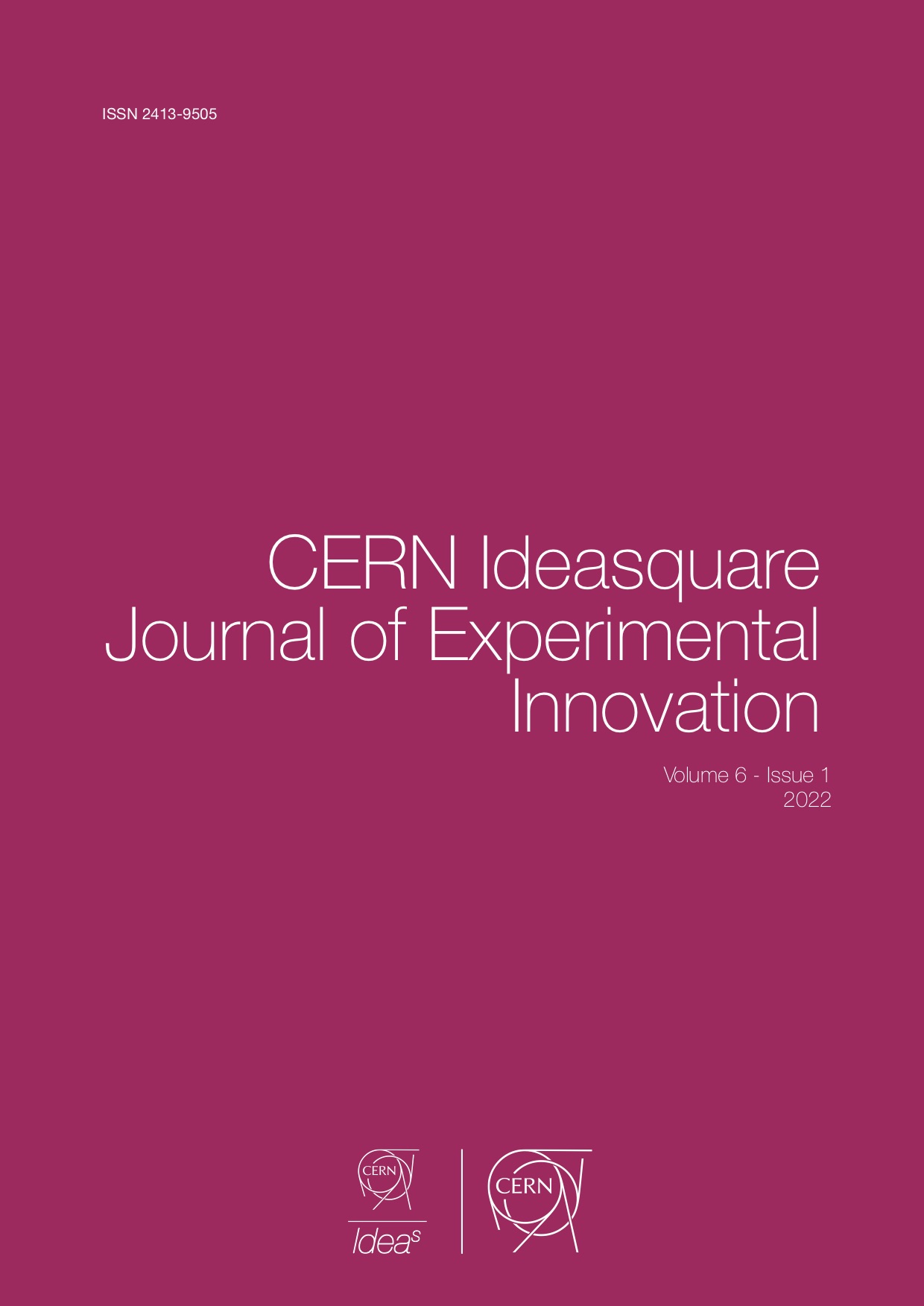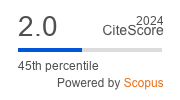Experimenting with policy design: fostering reshoring in Emilia Romagna region
DOI:
https://doi.org/10.23726/cij.2022.1333Keywords:
policy design, design thinking, policy implementation, reshoring, policy prototypingAbstract
Design for policy deals with the policy cycle by recurring to design practices and tools, such as user-centered design, co-design,
insights identification, abduction, creativity, prototyping. Empirical studies show that practice of design as inspirational and creative practice usually happens in the first phases of the policy cycle, and it hardly manages the challenges faced in policy formulation and policy implementation of the later phases of the policy cycle. In this case study we experiment with a policy innovation process that deals with those practices also in later stages of the policy cycle. The case study settles at the Regional level in Emilia Romagna to foster Reshoring initiatives.
References
Ancarani, A., Di Mauro, C., Fratocchi, L., Orzes, G., & Sartor, M. (2015). Prior to reshoring: A duration analysis of foreign manufacturing ventures. International Journal of Production Economics, 169, 141-155.
Barbieri, P., Ciabuschi, F., Fratocchi, L. and Vignoli, M. (2018). What do we know about manufacturing reshoring?. Journal of Global Operations and Strategic Sourcing, 11(1), 79–122.
Ciabuschi, F., Lindahl, O., Barbieri, P., & Fratocchi, L. (2019). Manufacturing reshoring: A strategy to manage risk and commitment in the logic of the internationalization process model. European Business Review, 31(1), 139-159.
Cocchi, N., Dosi, C., & Vignoli, M. (2021). The Hybrid Model Matrix: Enhancing Stage-Gate with Design Thinking, Lean Startup, and Agile. Research-Technology Management, 64(5), 18-30.
Dosi, C., Iori, M., Kramer, A., & Vignoli, M. (2021). Successful implementation of discrete event simulation: integrating design thinking and simulation approach in an emergency department. Production Planning & Control, 1-15.
Dosi, C., Mattarelli, E., & Vignoli, M. (2020). Prototypes as identity markers: The double‐edged role of prototypes in multidisciplinary innovation teams. Creativity and Innovation Management, 29(4), 648-666.
Dosi, C., Rosati, F., & Vignoli, M. (2018). Measuring design thinking mindset. In DS 92: Proceedings of the DESIGN 2018 15th International Design Conference (pp. 1991-2002).
Elia, S., Fratocchi, L., Barbieri, P., Boffelli, A., & Kalchschmidt, M. (2021). Post-pandemic reconfiguration from global to domestic and regional value chains: the role of industrial policies. Transnational Corporations, 28(2), 67-96.
Franchini, G., Dosi, C., & Vignoli, M. (2017). The coexistence of design thinking and stage and gate in the same organisational context-Challenges and need for integration. In DS 87-2 Proceedings of the 21st International Conference on Engineering Design (ICED 17) Vol 2: Design Processes, Design Organisation and Management, Vancouver, Canada, 21-25.08. 2017 (pp. 387-396).
Fratocchi, L., Di Mauro, C., Barbieri, P., Nassimbeni, G., & Zanoni, A. (2014) When manufacturing moves back: Concepts and questions. Journal of Purchasing and Supply Management, 20(1), 54–59.
Hermus, M., van Buuren, A., & Bekkers, V. (2020). Applying design in public administration: a literature review to explore the state of the art. Policy & Politics, 48(1), 21-48.
Hoppe, R. (2018) ‘Heuristics for practitioners of policy design: rules-of-thumb for structuring unstructured problems’, Public Policy and Administration, 33(4), 384–408.
Howlett, M. (2020). Challenges in applying design thinking to public policy: dealing with the varieties of policy formulation and their vicissitudes. Policy & Politics, 48(1), 49-65.
Junginger, S. (2013). Design and innovation in the public sector: Matters of design in policy-making and policy implementation. Annual Review of Policy Design, 1(1), 1-11.
Kimbell, L., Bailey, J. (2017) ‘Prototyping and the new spirit of policy-making’, CoDesign, 13(3), 214–226.
Magistretti, S., Ardito, L., & Messeni Petruzzelli, (2021) A. Framing the Microfoundations of Design Thinking as a Dynamic Capability for Innovation: Reconciling Theory and Practice. Journal of Product Innovation Management.
Mincolelli, G., Cocchi, N., Dosi, C., & Vignoli, M. (2020). “OPER. TEN” Transform Emergency Now!-facing Covid-19 with Open Innovation and Human Centered Design. Strategic Design Research Journal, 13(3), 658-668.
Micheli, P., Wilner, S. J., Bhatti, S. H., Mura, M., & Beverland, M. B. (2019). Doing design thinking: Conceptual review, synthesis, and research agenda. Journal of Product Innovation Management, 36(2), 124-148.
Pegoraro, D., De Propris, L. & Chidlow, A. (2021). Regional factors enabling manufacturing reshoring strategies: A case study perspective. Journal of International Business Policy. https://doi.org/10.1057/s42214-021-00112-x
Simon, H.A., 1969. The Sciences of the Artificial.
Strauss, A., & Corbin, J. (1998). Basics of Qualitative Research Techniques.Thousand Oaks, CA: Sage publications
Van Buuren, A., Lewis, J. M., Guy Peters, B., & Voorberg, W. (2020). Improving public policy and administration: exploring the potential of design. Policy & Politics, 48(1), 3-19.
Wiesmann, B., Snoei, J.R., Hilletofth, P., & Eriksson, D. (2017). Drivers and barriers to reshoring: a literature review on offshoring in reverse. European Business Review, 29(1), 15–42.
Downloads
Published
How to Cite
License
Copyright (c) 2022 Clio Dosi, Matteo Vignoli, Paolo Barbieri, Federico Frattini, Franco Mosconi, Giorgio Prodi

This work is licensed under a Creative Commons Attribution 4.0 International License.
Authors who publish with this journal agree to the following terms:
- Authors retain copyright and grant the journal right of first publication with the work simultaneously licensed under a Creative Commons Attribution License that allows others to share the work with an acknowledgement of the work's authorship and initial publication in this journal.
- Authors are able to enter into separate, additional contractual arrangements for the non-exclusive distribution of the journal's published version of the work (e.g., post it to an institutional repository or publish it in a book), with an acknowledgement of its initial publication in this journal.
- Authors are permitted and encouraged to post their work online (e.g., in institutional repositories or on their website) prior to and during the submission process, as it can lead to productive exchanges, as well as earlier and greater citation of published work (See The Effect of Open Access).


